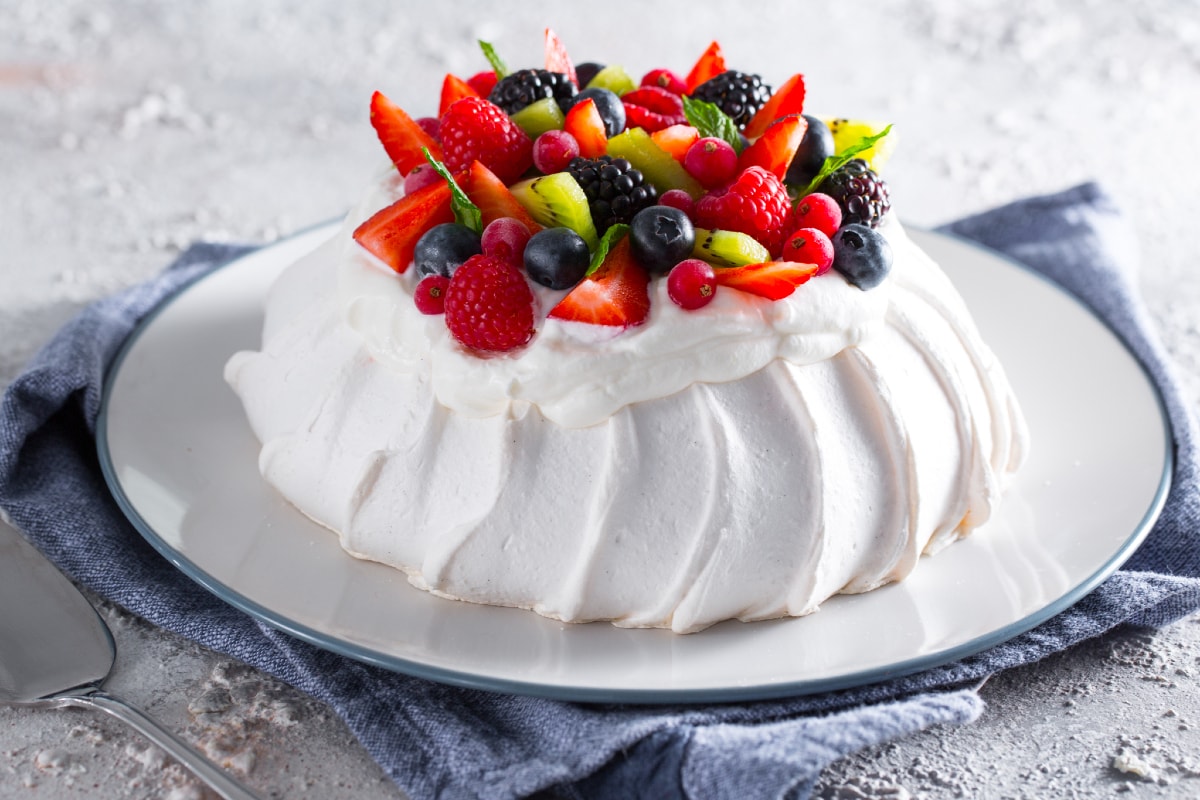Paradise cake (Torta Paradiso)
- Easy
- 1 h 15 min

Pavlova is an iconic cake with an unmistakable appearance: an elegant meringue filled with whipped cream and a cascade of fresh, colorful fruit! Australia and New Zealand have always contended the origin of this recipe, but its name is actually dedicated to a famous Russian ballerina, Anna Pavlova, whose tour of both countries in the 1920s was a resounding success. The shape and whiteness of pavlova pay tribute to her elegance, which enchanted theater audiences the world over. The meringue base is different from the original one as it is crisp on the outside and soft on the inside, for a unique consistency that you too can achieve if you follow our tips and advice, step by step! Challenge yourself and make your most beautiful pavlova yet, by choosing whatever filling you prefer: kiwi and wild berries in pure New Zealand style, or passion fruit just like in the Australian version, or with chocolate cream, lemon or yogurt for an alternative flavor?
GialloZafferano is the most important Italian digital brand in terms of food and its recipes are studied and designed to be easily made with granted results. The rigorous method we use to prepare our recipes starts form the usage of correct ingredients quantities, that must be combined following our directions. We are presenting our ingredients using also USA measures (tbsp, cups, etc) to help foreign visitors that use this measure system. Anyway it rounds up European doses introducing some approximation errors that should be fixed during the preparation. To get the best results, we recommend our readers to preparare the ingredients by using the European quantities (g,Kg, ml, ecc.).

To make pavlova, start by heating a static oven to 266F, then separate the yolks from the whites: be sure to use eggs at room temperature. Place the egg whites in the bowl of a planetary mixer fitted with a whisk 1 and switch it on at a medium-high speed. Wait for the egg whites to turn white in color, then gradually add the sugar 2. After adding all the sugar the meringue will become dense and creamy; now add the lemon juice 3.

Add the vanilla extract too 4 and wait until absorbed: by now, the meringue will be firm in consistency 5; switch the planetary mixer off and add the corn starch 6.

Delicately stir with a spatula from the bottom up, so as not to deflate the mixture 7, then place mixture on an oven tray lined with parchment paper. Use a spatula to shape the meringue into the shape of a mountain 8 and smooth the surface 9.

Delicately create a well 10 and shape the sides with a smaller spatula, from the bottom up 11. Bake the meringue in a preheated oven at 266F for 10 minutes, then lower the temperature to 212F and bake for another 50 minutes, without ever opening the door 12. Once this time is up, switch the oven off and leave the pavlova to cool for at least 2 hours, with the oven shut.

Once the pavlova has cooked, prepare the decorations: cut the kiwi in half, then into crescents 13; cut the strawberries into four pieces 14. Lastly, wash and dry the wild berries. Now prepare the whipped cream: place the fresh liquid milk in a bowl with the powdered sugar 15.

Beat with an electric whisk until firm and creamy 16. You are now ready to fill the pavlova: delicately tap on the surface 17 to lightly crack the meringue and delicately widen the cavity 18.

Fill the cavity with the whipped cream 19 and decorate with the fresh fruit 20 21.

Garnish with the fresh mint leaves 22 and lightly dust with the powdered sugar 23. Your wonderful pavlova is ready to be served 24!